Can eating local food really help in reducing the potentials of global warming? In some ways, I personally think we can help reduce the potential of global warming by consuming local products. Food stuff that flew half way across the globe, not to mention the costly jet fuel, and the cargo ships that criss cross the seven seas contribute to the pollution to an already polluted sea. The long distance heavy weight logistics transportation choked the motorway causing long traffic jam. I dare not speculate on air pollution readings as the only statistics can only come from the environmental air survey and control department for the exact reading of air pollution and carbon monoxide in the atmosphere. One thing for sure, eating local food can definitely help our own local farmers.
Agriculture is still thriving here, with a high percentage of the farmers committed to the practice of organic farming. I am a big supporter for organic produce. Even though I am not a vegetarian, I can survive on eating a big bowl of fresh salad twice a day, every day of my entire life.

I don't eat much red meat other than beef. Being in central mountainous europe and landlocked, we are a country of natural lakes. Seafood is very very far away from my dining table, is also available in the market with a question "do you really want to pay that much for a few pieces of scallops? I love our fresh sweet water trouts from our local lakes and they are a lot of trouts being farmed here. My nearby local supermarket chain engage and support the local farmers

and distributing the local organic products through a special programm locally known as "Aus der Region, Für die Region". Translated into english that means, "From the region, for the region". That practically means these tomatoes and other produce under this program came from nearby farmers not far from where I live.

Only products that are grown organically will be distributed under the bio labels. Organic produce cost a little bit more compared to mass produce non organic way or those imported from nearby countries. Organic products that are imported from nearby countries cost even more but I believe the more people buying and supporting local organically grown produce foodstuff, the faster our local organic farmers will establish themselves in the market and will automatically lowers and stabilise the prices within the competitive market.
Our mountain climate could not support some basic important food sources, such as fruits from citrus family or the good lipids oil from olives. Whatever we cannot self produce had to be brought in from other warmer European countries. We produce our own canola oil however,
http://images.google.com/images?hl=en&safe=off&rls=com.microsoft%3Ade-ch&um=1&newwindow=1&sa=1&q=raps+feld+schweiz&btnG=Search+images
but at the same time facing stiff competition with importers of similar goods. It is my duty to support the local goods first before looking into other imported options.
For the second week, I've decided to take up Small Footprint's challenge last Wednesday;
Change The World Wednesdays
For one full day this week, eat only local foods. No tropical fruits from across the world ... no veggies that traveled hundreds of miles to get to your table ... only locally grown foods (this includes meats, dairy products, etc., if you eat them).
I must say, Small Footprint has came up with quite a challenge. I've never really considered how I took for granted a lot of the foodstuff in my kitchen are products imported from other countries. Didn't realise how dependent I am on coffee until I took up this challenge. What a sluggish Saturday it was for me to start the day. No coffee to wake me up as it is not local product. We're too cold to grow coffee here, and its so hard to wake up in the morning with only fresh pasturised milk from the local cows. Ever wonder why babies went to sleep after drinking their milk? Can't have tea or orange juice either. All these are imported. I've always read somewhere "drink 1 or is it 2 litres of water everyday, which I did not. I've always been the person who like to drink something with a flavour, even if that means natural water with a squeeze of lemon or a few crushed leaves of fresh mints. This challenge really changed all that. I did siphoned in more water into my body to replace my normal tea intake. Water suddenly taste very refreshingly good.
Simple spices like pepper is not grown here. Fruits, especially orange and lemon, most of them comes from warmer southern european countries. I think we are all spoilt for choices living in the era of convenient stores, supermarkets, hypermarkets and specialist exotic foodstore which sprout like mushrooms all around us. One don't have to fly 13 hours or more to Asia to enjoy mango, tandoor chicken, satay or even sushi.
 Bircher Muesli was created by Dr. Bircher Benner for his patients in his Zürich clinic during the 1890’s. This is a nutritious meal in itself made of rolled oats, fruits, crush nuts, yoghurt and honey. Bircher muesli is one of the most popular breakfast item besides bread, butter etc which can be found all over Switzerland.
Bircher Muesli was created by Dr. Bircher Benner for his patients in his Zürich clinic during the 1890’s. This is a nutritious meal in itself made of rolled oats, fruits, crush nuts, yoghurt and honey. Bircher muesli is one of the most popular breakfast item besides bread, butter etc which can be found all over Switzerland.
Taking the challenge of Small Footprint’s about eating local food, I’ve prepared mine with ingredients locally produced with seasonal fruits which I plucked from my own garden.
Breakfast:- Swiss Bircher Muesli
2 cups of natural yoghurt (choose yoghurt that contain live bifidus cultures which is good for stomach flora) 
2 cups of rolled oats  1/2 cup of milk
1/2 cup of milk
a cup each of fresh seasonal fruits which is available right now ie;
Ribes Rubrum also known as red currant
Black and red cherries (pitted and halved)
strawberries cut into quarter
2 table spoons of sun flower seeds
a tablespoon of local honey
(I usually add some crushed walnuts, pecans, and hazels but all these are imported, so I have to exclude them for this challenge)
How to do it;
Mix the roll oats with milk to soften them. I usually do this the night before I go to sleep and leave the oat and milk in the fridge, but sometimes I just prepare them on the spot and chew on the oats bits a little al-dente. It kind of add some texture to the mass.
Add in the yoghurt, honey and mix in the fruits. You can crush some of the fruits to release their natural juice to add some colour to the roll oats mix. 

Portion them into pretty serving bowls, decorate with the extra fruits and a spoonfull of yoghurt on top. Sprinkle with shelled sunflower seeds and serve 2.
These are just the basic recipe. You can change the fruits to any of your local fruits. I would love to have chopped mango, pineapple and banana for an exotic breakfast but that would defy the purpose of this "eat your local food challenge"
Lunch - White sausage salad
2 white sausage - boiled and thinly sliced
leafy salad
carrot - thinly sliced
eared corn kernels
a handful of sunflower seeds and pumkin seeds (I love them for a bit of nutty taste)
a small tiny piece of local cheese, slice or diced
Tomatoes, dice or wedges
Salad Dressing2 table spoon of honey
2 table spoons of canola oil
2 table spoon of apple cider
a pinch of salt (according to taste)
(had to go without pepper because this one is imported)
Mix them all together until smooth.
Mix all the salad and the dressing in a salad bowl, serve with a slice of bread made by the local bakery with flour from the local mill and a glass of local wine from the vinyard behind the house.
(you can have it with beer if you like)
Tea time.Mint tea
Boil water until tepid warm. Dont let it go to boiling point. Pick a few leaves of mint from the garden, rinse in water, dry it and steep the mint leaves in the tepid warm water for 3 minutes. Very refreshing taste and good for digestion after heavy meals.
Rhubarb Pie recipe;5 rhubarb stalks from the garden - peel off the skin and cut them into half inch size. Boil water on pot until boiling. Remove pot from heat and blanche the prepared rhubarb in boiling water for one minute.
Use a sieve and remove the hot water.
A chrispy thin quick pie crust;One cup of flour
50gms butter melted in a pot with 3 table spoons of water.
Mix all ingredients together in a bowl and knead into a dough. Use rolling pin to evenly thin the dough and line the dough in the baking dish, arrange the half softened rhubarb on the dough. Beat 1 egg and half cup of double milk cream together until smooth.
pour the egg mixture on top and put in the oven at 200° degrees, in the middle for 25 minutes. serves 2
Dinner (serves 2 person)
2 rainbow trouts (from local Swiss lake) - gutted, and cleaned. Fillet the fish with a sharp knife for a clean cut and rolled it on a bed of bread crumbs. 2 table spoons of canola oil in the pan(that's the only oil we produce here) Control the heat of the pan. Medium heat is perfect and pan grill the trout fillet until crispy looking on both sides.
4 brown mushrooms - halved, cut into quarter, quick 2 minutes pan fried also with local cooking butter
1 Fennel - sliced and boiled
Half kilo newly harvested local potatoes - skinned, boiled and drained
Parsley and chives - home grown - finely chopped
2 table spoon of canola oil (usually I use olive oil but not in this challenge)
1 table spoon of walnut oil
Add the copped parsley and chives, salt to taste, and dress up the potatoes.
Put everything on a plate, dress up with fresh sliced tomatoes and fresh basil leaves (plucked from the garden)
Voila. Bon Apetite!

 Sometimes its nice to walk at the wide open spaces of the corn fields and take in the colours, even when the sky is grey. The warm colours in the nature really cheered me up.
Sometimes its nice to walk at the wide open spaces of the corn fields and take in the colours, even when the sky is grey. The warm colours in the nature really cheered me up.
 autumn beauties.
autumn beauties.
 With the temperature steadily cooling down, some plants' leaves are slowly losing their ability to photosynthesize. The first one to change colours in the backyard are the parthenocisus creepers.
With the temperature steadily cooling down, some plants' leaves are slowly losing their ability to photosynthesize. The first one to change colours in the backyard are the parthenocisus creepers.


 Where weather is rainy, blackspot infection becomes prevalent like the picture above. This year, a very serious case of fungal infection was seen on Yolanda d'Aragon's leaves. Black spot is apparently more prevalent in areas with clean air and low pollution. It seems that the blackspot fungus cannot grow on leaves that are covered with a layer of pollution grime.
Where weather is rainy, blackspot infection becomes prevalent like the picture above. This year, a very serious case of fungal infection was seen on Yolanda d'Aragon's leaves. Black spot is apparently more prevalent in areas with clean air and low pollution. It seems that the blackspot fungus cannot grow on leaves that are covered with a layer of pollution grime. 
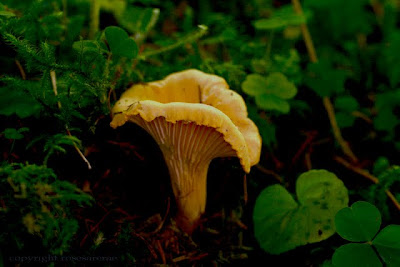



 It can grow to 12 feet, so I will put an arch to support the canes next spring.
It can grow to 12 feet, so I will put an arch to support the canes next spring.
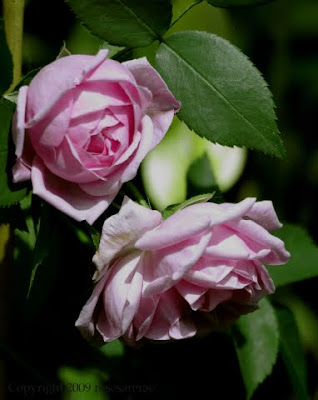
 The whole bunch of my spring blooms from this 2 roses was unable to open up during spring and early summer.
The whole bunch of my spring blooms from this 2 roses was unable to open up during spring and early summer.  The petals got saturated after the rain and they end up rotting inside the mumified dried-out outer petal crust.
The petals got saturated after the rain and they end up rotting inside the mumified dried-out outer petal crust.


 The weather is bad at the moment. I have now added my local weather station on the top page. As I rumble and ramble about life in the alps, you can see for yourself if I'm shining under the sun or bundled up in layers of wool knits with chattering teeth.
The weather is bad at the moment. I have now added my local weather station on the top page. As I rumble and ramble about life in the alps, you can see for yourself if I'm shining under the sun or bundled up in layers of wool knits with chattering teeth.  There's no sun at all the last couple of days. Some parts of the garden is beginning to look very gloomy as half of the colourful flowering plants are done with their flowers and busy making seeds. Weedy seeds can be seen on cobwebs everywhere.
There's no sun at all the last couple of days. Some parts of the garden is beginning to look very gloomy as half of the colourful flowering plants are done with their flowers and busy making seeds. Weedy seeds can be seen on cobwebs everywhere.  We have cold air coming down from the north pole at the moment and it is raining, foggy and grey sky, but this cooling temperature will create a magical autumn colour display for the next coming weeks. Had to push myself out into the garden, with an umbrella in one hand and took some pictures before the prolonged rain spoils those last bit of garden beauties.
We have cold air coming down from the north pole at the moment and it is raining, foggy and grey sky, but this cooling temperature will create a magical autumn colour display for the next coming weeks. Had to push myself out into the garden, with an umbrella in one hand and took some pictures before the prolonged rain spoils those last bit of garden beauties. Mevrouw Nathalie Nypels, sounds like a celebrity's baby's name (ha ha) This is a Dutch name and this rose was bred in the Netherlands in 1919.
Mevrouw Nathalie Nypels, sounds like a celebrity's baby's name (ha ha) This is a Dutch name and this rose was bred in the Netherlands in 1919.  I got this rose as a bare roots last winter and she is less than 2 feet tall but she didn't waste anytime at all this year. Bloom cycle is very short and every few weeks there's a bunch of flowers on the bush. There are no fragrant unfortunately, but for the joy of blooms, and adding some colours in general landscaping, I find this rose is very hard working.
I got this rose as a bare roots last winter and she is less than 2 feet tall but she didn't waste anytime at all this year. Bloom cycle is very short and every few weeks there's a bunch of flowers on the bush. There are no fragrant unfortunately, but for the joy of blooms, and adding some colours in general landscaping, I find this rose is very hard working.  I didn't have a "real" holiday this year because I forgotten to make proper plan during 2008 hectic year. It has never happened before that I was so busy to the point that I forgotten about planning annual leave but I am lucky to have such great friends who made my short 10 summer days spent with them unforgettable. I was in a beautiful region in northern Italy, breathtaking landscape, challenging climbing walls with endless treks for mountain biking and walking around. I will update my summer add-ventures blog later. More than 1000 pictures to resize!In between rock climbing and all the outdoor adventures, I also managed to document some roses that grew up on that altitude.
I didn't have a "real" holiday this year because I forgotten to make proper plan during 2008 hectic year. It has never happened before that I was so busy to the point that I forgotten about planning annual leave but I am lucky to have such great friends who made my short 10 summer days spent with them unforgettable. I was in a beautiful region in northern Italy, breathtaking landscape, challenging climbing walls with endless treks for mountain biking and walking around. I will update my summer add-ventures blog later. More than 1000 pictures to resize!In between rock climbing and all the outdoor adventures, I also managed to document some roses that grew up on that altitude.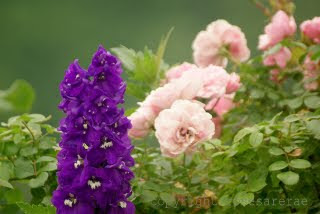
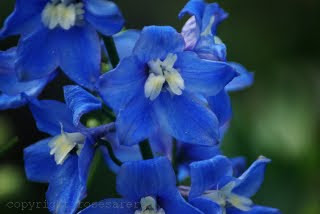
 This year, since mid spring until now, Stanwell Perpetual has been very generous and very floriferous and there are still little buds forming even at this time of year. This is one rose I will take with me to the graveyard. Shall add that the next time I update the will. Ha ha.
This year, since mid spring until now, Stanwell Perpetual has been very generous and very floriferous and there are still little buds forming even at this time of year. This is one rose I will take with me to the graveyard. Shall add that the next time I update the will. Ha ha.
 Many years ago, when my gardening craze started, I haven't got a proper green house and my "make do nursery corner was then a just big huge planting tubs under the trees in the woodland" just next to the existing garden. The bottom part of the big tubs are filled with proprietary commercial soil to keep my seedlings plants nursery pots moist all the time. One rainy summer, I failed to check the collected rain water resevoir level and the bottom part of the watering system was flooded and the bottom part of the roses pots was standing in still water. After a while, when I was ready to plant the roses into the ground, I found the rootstock of Comte de Chambord had rotted and the plant had produced its own roots. As I gently pulled it out of its nursery pot, the plant separated into 2 plants. What a boon that was! I planted them in 2 different parts of the garden, one under dapple shade of the woodland and another in full sun on the bank of a south facing slope.
Many years ago, when my gardening craze started, I haven't got a proper green house and my "make do nursery corner was then a just big huge planting tubs under the trees in the woodland" just next to the existing garden. The bottom part of the big tubs are filled with proprietary commercial soil to keep my seedlings plants nursery pots moist all the time. One rainy summer, I failed to check the collected rain water resevoir level and the bottom part of the watering system was flooded and the bottom part of the roses pots was standing in still water. After a while, when I was ready to plant the roses into the ground, I found the rootstock of Comte de Chambord had rotted and the plant had produced its own roots. As I gently pulled it out of its nursery pot, the plant separated into 2 plants. What a boon that was! I planted them in 2 different parts of the garden, one under dapple shade of the woodland and another in full sun on the bank of a south facing slope. 

 Even though I am fully equipped as though I am a professional rock climber with all the hard wear gears, I am never really serious about this sport.
Even though I am fully equipped as though I am a professional rock climber with all the hard wear gears, I am never really serious about this sport. I use to follow them, male and female in the group but I really am into photography, laid back and often distracted and got lulled behind those wild flowers and insects in the meadows and always too slow for for everyone else's pace. This butterfly is attracted to the orange colour on the backpack.
I use to follow them, male and female in the group but I really am into photography, laid back and often distracted and got lulled behind those wild flowers and insects in the meadows and always too slow for for everyone else's pace. This butterfly is attracted to the orange colour on the backpack. The rain from the last couple of days did made the river treks very muddy and slippery. My very short dog was totally covered with mud and looked more like a giant rat than a silky terrier.
The rain from the last couple of days did made the river treks very muddy and slippery. My very short dog was totally covered with mud and looked more like a giant rat than a silky terrier.  I had to let him swim twice in the river to free him from the mud that was caking up and encasing him. Pooch is a good swimmer. I've even let him swim in the sea when we go sailing but this particular river, the current was strong. I don't want to lose my dog so he had to swim with the leash on but both dogs had so much fun splashing in the water to cool down.
I had to let him swim twice in the river to free him from the mud that was caking up and encasing him. Pooch is a good swimmer. I've even let him swim in the sea when we go sailing but this particular river, the current was strong. I don't want to lose my dog so he had to swim with the leash on but both dogs had so much fun splashing in the water to cool down. 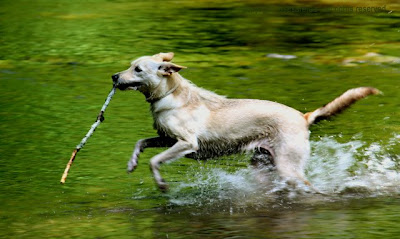 I haven't seen so much mud on a trek since trekking in Borneo's Mulu National Park many years ago.
I haven't seen so much mud on a trek since trekking in Borneo's Mulu National Park many years ago.  The humidity was high, maybe because of the warm day, and also the river and the amount of water on the ground after all the rain several days ago. My biggest relieve was the absence of the blood sucking leech that are all over the place in the tropical rainforest.
The humidity was high, maybe because of the warm day, and also the river and the amount of water on the ground after all the rain several days ago. My biggest relieve was the absence of the blood sucking leech that are all over the place in the tropical rainforest. 
 While walking like muddy zombie looking for a restaurant in a small village of Münchingen, I saw this kid sitting in a trolley pulled by his father. He is so cute and didn't even blink an eye while I took his pictures. He probably couldn't tell if I am a human or some kind of mud monster.
While walking like muddy zombie looking for a restaurant in a small village of Münchingen, I saw this kid sitting in a trolley pulled by his father. He is so cute and didn't even blink an eye while I took his pictures. He probably couldn't tell if I am a human or some kind of mud monster.
 The lilies stamen can stain light coloured clothings and difficult to remove.
The lilies stamen can stain light coloured clothings and difficult to remove. Each plants that exist in this world seemed to have been created to complete a chain that support other kinds of wild life. Lilies and the beetles are probably made for each other. This larvae spend most of its time eating the foliage of the lily plant and covered itself with its own feaces probably as camouflage from the prey birds .
Each plants that exist in this world seemed to have been created to complete a chain that support other kinds of wild life. Lilies and the beetles are probably made for each other. This larvae spend most of its time eating the foliage of the lily plant and covered itself with its own feaces probably as camouflage from the prey birds . 

 I don't eat much red meat other than beef. Being in central mountainous europe and landlocked, we are a country of natural lakes. Seafood is very very far away from my dining table, is also available in the market with a question "do you really want to pay that much for a few pieces of scallops? I love our fresh sweet water trouts from our local lakes and they are a lot of trouts being farmed here. My nearby local supermarket chain engage and support the local farmers
I don't eat much red meat other than beef. Being in central mountainous europe and landlocked, we are a country of natural lakes. Seafood is very very far away from my dining table, is also available in the market with a question "do you really want to pay that much for a few pieces of scallops? I love our fresh sweet water trouts from our local lakes and they are a lot of trouts being farmed here. My nearby local supermarket chain engage and support the local farmers  and distributing the local organic products through a special programm locally known as "Aus der Region, Für die Region". Translated into english that means, "From the region, for the region". That practically means these tomatoes and other produce under this program came from nearby farmers not far from where I live.
and distributing the local organic products through a special programm locally known as "Aus der Region, Für die Region". Translated into english that means, "From the region, for the region". That practically means these tomatoes and other produce under this program came from nearby farmers not far from where I live. Only products that are grown organically will be distributed under the bio labels. Organic produce cost a little bit more compared to mass produce non organic way or those imported from nearby countries. Organic products that are imported from nearby countries cost even more but I believe the more people buying and supporting local organically grown produce foodstuff, the faster our local organic farmers will establish themselves in the market and will automatically lowers and stabilise the prices within the competitive market.
Only products that are grown organically will be distributed under the bio labels. Organic produce cost a little bit more compared to mass produce non organic way or those imported from nearby countries. Organic products that are imported from nearby countries cost even more but I believe the more people buying and supporting local organically grown produce foodstuff, the faster our local organic farmers will establish themselves in the market and will automatically lowers and stabilise the prices within the competitive market. Bircher Muesli was created by Dr. Bircher Benner for his patients in his Zürich clinic during the 1890’s. This is a nutritious meal in itself made of rolled oats, fruits, crush nuts, yoghurt and honey. Bircher muesli is one of the most popular breakfast item besides bread, butter etc which can be found all over Switzerland.
Bircher Muesli was created by Dr. Bircher Benner for his patients in his Zürich clinic during the 1890’s. This is a nutritious meal in itself made of rolled oats, fruits, crush nuts, yoghurt and honey. Bircher muesli is one of the most popular breakfast item besides bread, butter etc which can be found all over Switzerland.
 1/2 cup of milk
1/2 cup of milk
